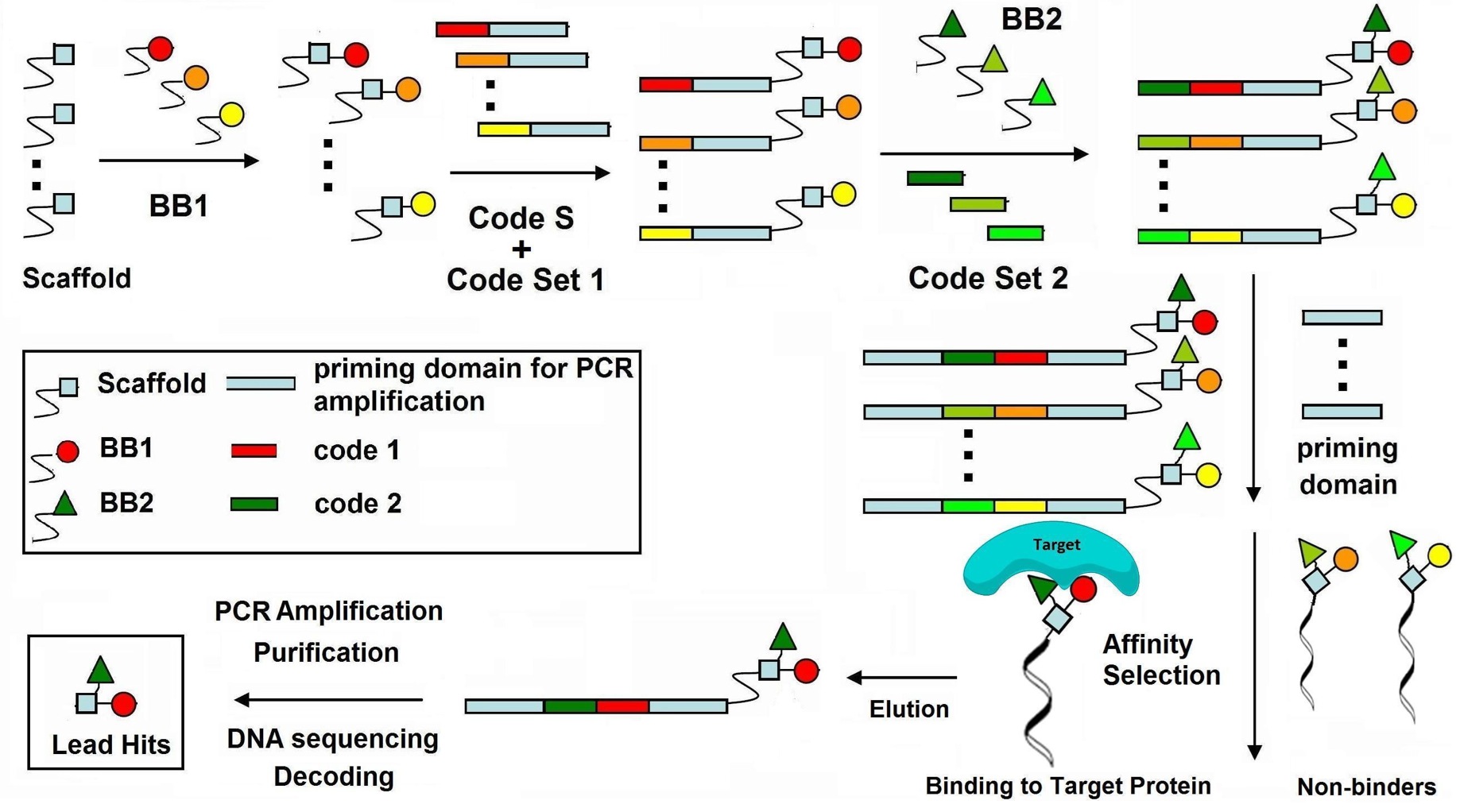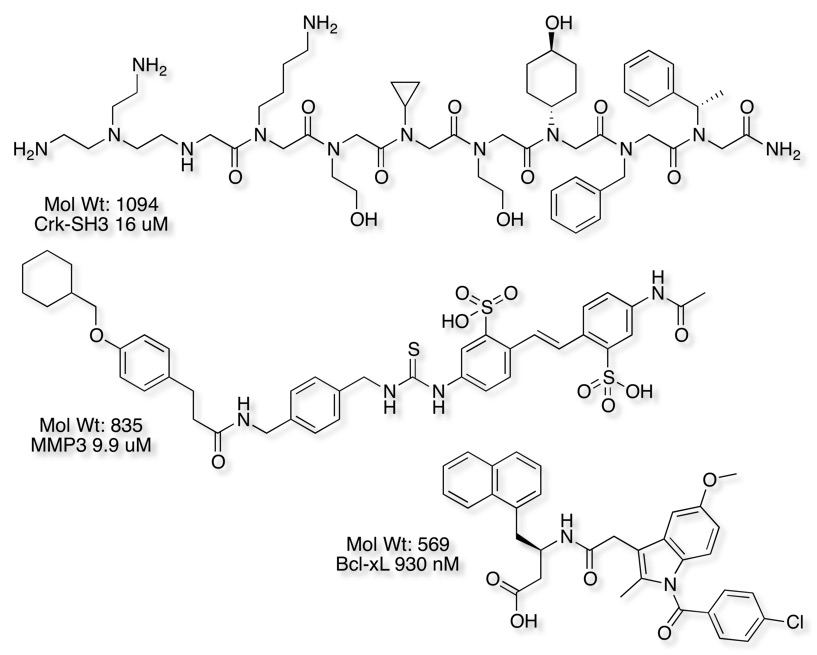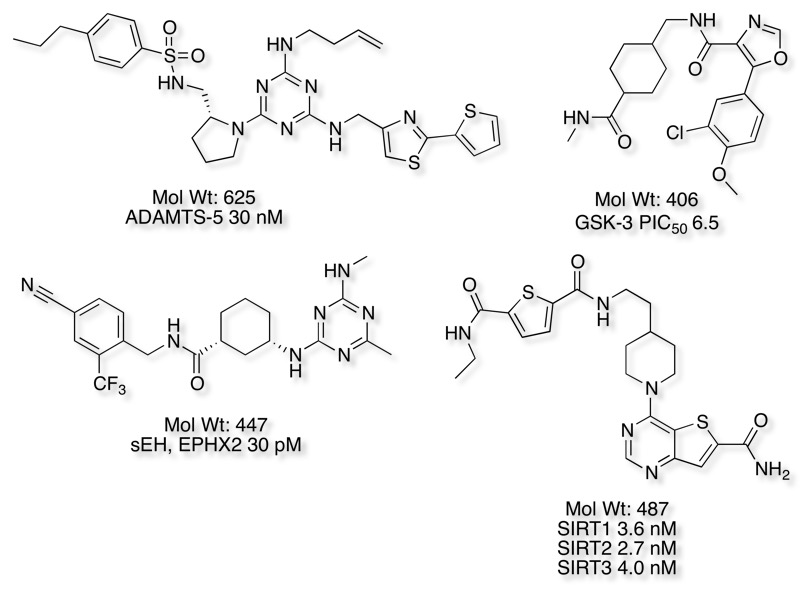Encoded Library Technology
Whilst we can try to build ever larger compound libraries the cost and resources limit the size of conventional libraries. Added to which plate dispensing technologies may have reached the physical limits as plate densities have increased. Combinatorial chemistry sought to build huge libraries based on automated synthesis technologies but testing, deconvolution and identification of the active hit proved to be fraught with problems. One solution has to been to encode the library during the synthesis such that each component of the testing mixture is individually tagged.
DNA encoded Libraries
Rather than screen each compound individually all compounds are simultaneously tested for their ability to interact with a target of interest in a single one-pot experiment. The challenge is to then to deconvolute and decode a complex mixture of chemical entities before and after selection. This was made possible by PCR amplification and DNA sequencing. DNA information density is very high, a 20-mer can encode millions of library members with error-avoiding redundancy providing an efficient “barcode” for molecules so in theory it is possible to create libraries of 100’s of millions of compounds for testing.
Theory first described by Brenner and Lerner in 1992 (Proc. Natl. Acad. Sci. U. S. A., 1992, 89, 5381–5383) DOI who built a 105 member peptide library as proof of principle. Building on the original proposal of Brenner and Lerner, DNA-recorded library chemistry has been pioneered by Professor Dario Neri (ETH).
- In DNA-recorded chemistry an oligonucleotide is added as an identification tag before or after a synthesis reaction.
- In DNA-directed chemistry the oligonucleotide both identifies and directs the synthesis of each library member.
The general approach to DNA-recorded library synthesis involves alternating library synthesis steps with enzyme-catalyzed DNA polymerization or ligation of short DNA sequences used to encode each synthetic step. Library diversity is generated over repeated cycles of division, synthesis, and pooling, a well-established method in combinatorial chemistry known as ‘‘split-and-pool’’ synthesis.
In 2001, Gartner and Liu described an approach in which a DNA oligonucleotide directs bond-forming reactions by bringing DNA-linked reagents into proximity through Watson–Crick base pairing.
Identification of hits
Binding selections are often performed using an immobilized target that chromatographically separates active library members bound to the target from non-binding library members that remain in solution. Can also be done in solution using capillary electrophoresis or a tag suitable for subsequent immobilisation (eg His tag).. PCR amplification and DNA sequencing allows identification of the actives. Of course, not all molecules with affinity for the target protein will have the desired biological effect, so representative hits are synthesised (off-DNA) and tested in a functional assay. Any validated hits of interest can then be followed up by hit expansion libraries (off-DNA) using the established routes and guided by the affinity hit data.
Overal Scheme
The overall process is shown below in a schematic kindly provided by Hitgen, the first pharmacophoric building block is added to the scaffold which is then individually tagged with a PCR primer and a DNA code for the particular building block and scaffold, the products from the first reaction are then mixed and split into separate reactions and the second building block added and the second DNA code appended followed by the priming domain. The mixture is then screened against the target and non-binders excluded. Ligands binding to the target are isolated and subjected to PCR amplification, purification and sequencing to identify the tag and hence small molecule.

Examples of Libraries
There are several design limitations that restrict the types of chemistry that can be used, it needs to be high efficiency to avoid incomplete reaction, compatible with the DNA tag and carried out in aqueous solution. However a range of chemistries have now been shown to meet these criteria including amide coupling reactions, urea formation, CLICK chemistry, Reductive amination, SNAr reactions, Michael additions, Staudinger reactions, Diels-Alder, Suzuki cross-coupling, and Wittig reactions. In addition providing the “bar codes” are unique it is also possible to combine libraries prior to screening thus increasing the chemical diversity.

Examples of Hits from screening DNA Encoded libraries
I’ve pulled together some of the reported hits from using this technology, I suspect some were early academic “proof-of-principle” but many are pretty high molecular weight. More recently the library designs appear to be more focused on ensuring the hits have drug-like properties, in addition the chemistry is of course well developed for preparing analogues.




Updated 15 December 2015